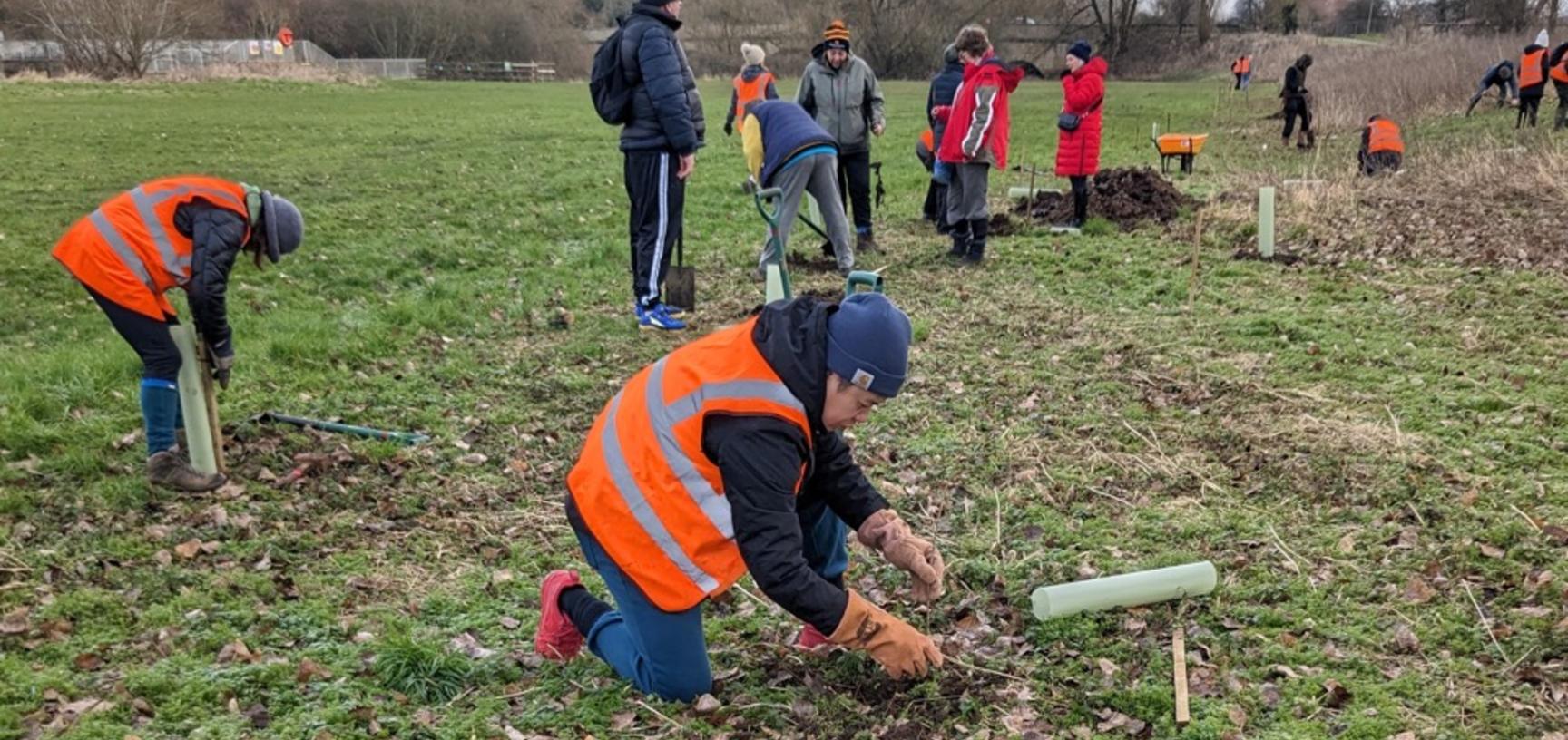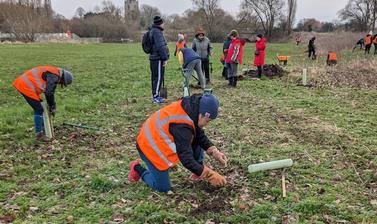Oxford Botanic Garden Curator takes part in community trees project
Mark Brent, Curator and Head of Horticulture at Oxford Botanic Garden, has taken part in a tree-planting project in north Buckinghamshire, which has seen the introduction of 115 black poplar (Populus nigra) trees to the area. Mark was invited to take part in the project by Greg Fairley, founder of conservation group Community Trees MK. Unbeknownst to Greg, Mark’s father had been involved in the reintroduction of the black poplar to the area many years ago in his capacity as Countryside Officer for Buckinghamshire County Council (BCC). Mark’s father was an ardent conservationist who, together with Roger Jefcoate, Deputy Lieutenant of Buckinghamshire, took part in guerrilla tree planting long before it became popular. Several maturing trees can be seen around Thame as a result of these efforts. Native species conservation is a core element of Oxford Botanic Garden & Arboretum’s Strategic Plan, and it felt fitting for Mark to become involved in its conservation.
The British black poplar is a large tree, with a thick, fissured trunk, and can be found on floodplains and along ditches. The Vale of Aylesbury, running along the River Thame to the Oxfordshire border, has the largest population in the country. National numbers have been declining, and the black poplar is becoming rarer. The tree has long been an important part of the British countryside – the durable wood was widely used as a building material, and Constable included them in his most famous painting, The Hay Wain.
Its decline can be attributed to the fact that male and female black poplars need to be sited close to each other. The fertilised seeds require damp ground to germinate, but drainage of land for agricultural purposes has made this difficult, and this species has been slowly disappearing from the landscape. Surveys estimate that there are only 7000 black poplars left in England, Wales and Ireland, of which 600 are female.
On Wednesday 17 January 115 trees were planted at Emberton Country Park in Olney, on a site near the Great Ouse river. These trees were carefully chosen for their genetic diversity. Female trees are particularly rare in the wild, and 59 such trees were planted alongside 54 males. They will attract insects, some of which are rare, as well as bird populations, enhancing the biodiversity of the area. Mark was delighted to be able to represent Oxford Botanic Garden and Arboretum at the event.
The project was supported by Joan Cottrell of Forest Research, part of The Forestry Commission, Paul Holton of BCC, Nicola Thomas of Buckinghamshire and Milton Keynes Natural Environment Partnership, the Lindengate Charity, and the Landscape Services Team from Milton Keynes County Council. On the day of planting, the Mayor of Milton Keynes Mick Legg and local councillors showed their support, and Emberton Country Park volunteers and manager Samuel Flowers helped to pull everything together.
Photos courtesy of Greg Fairley







